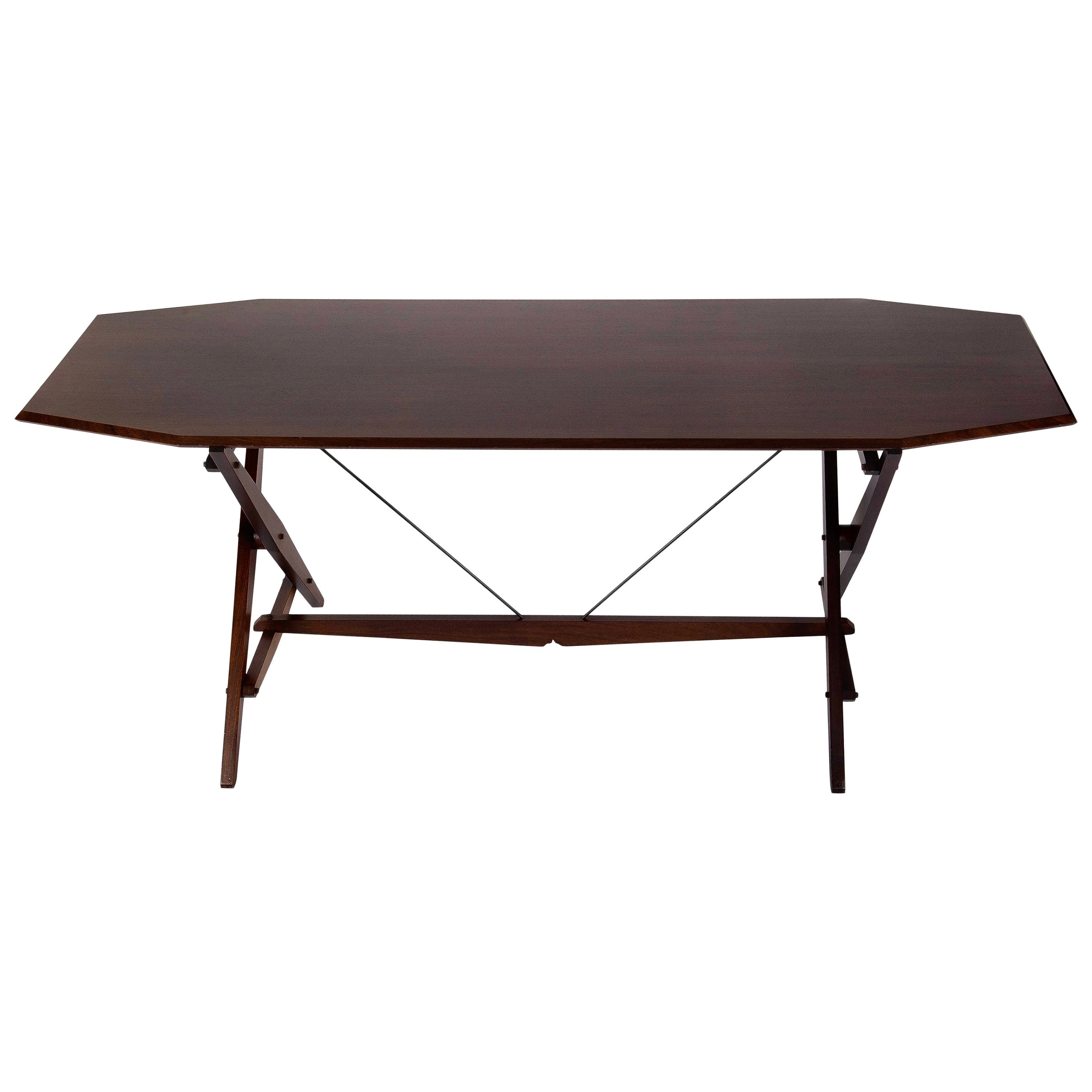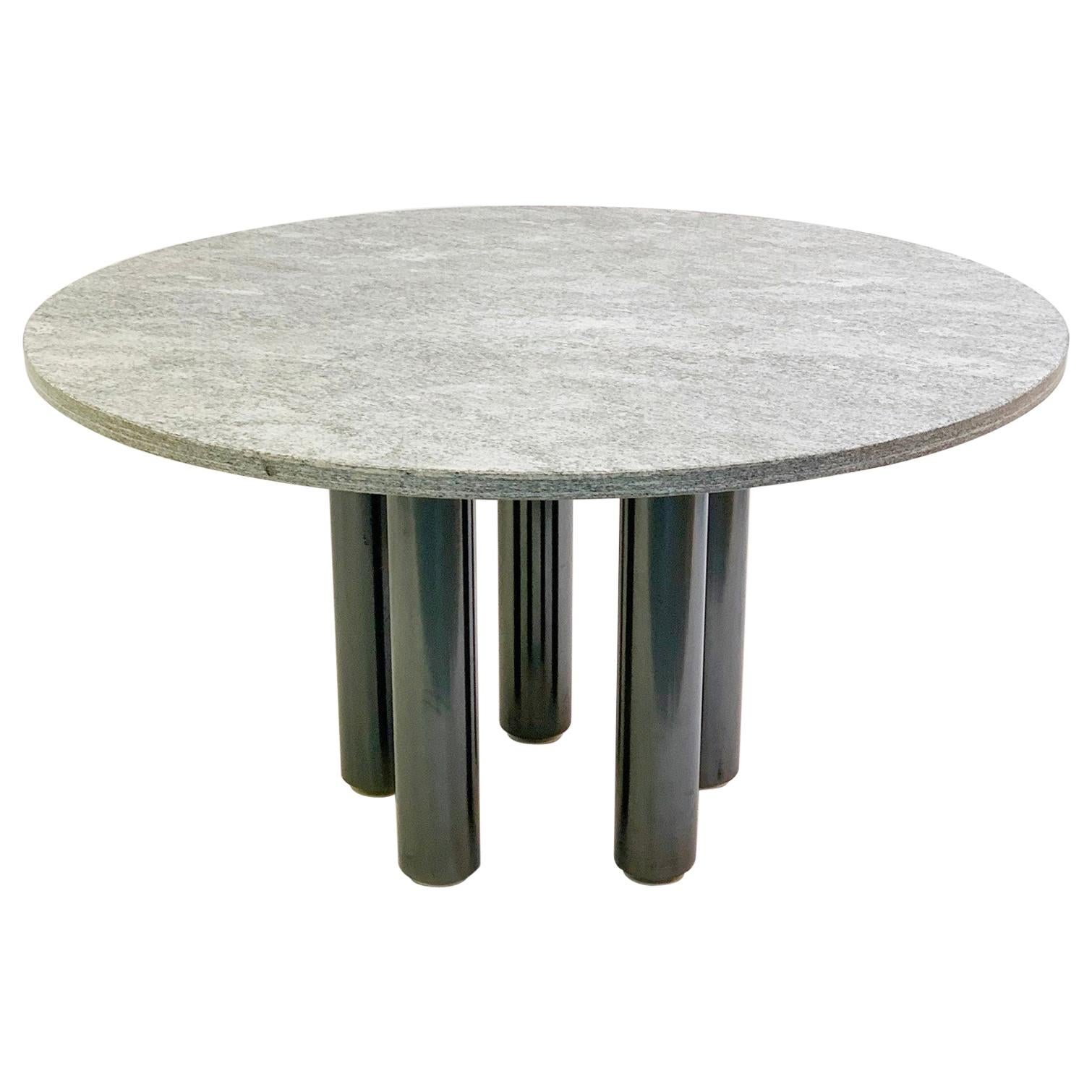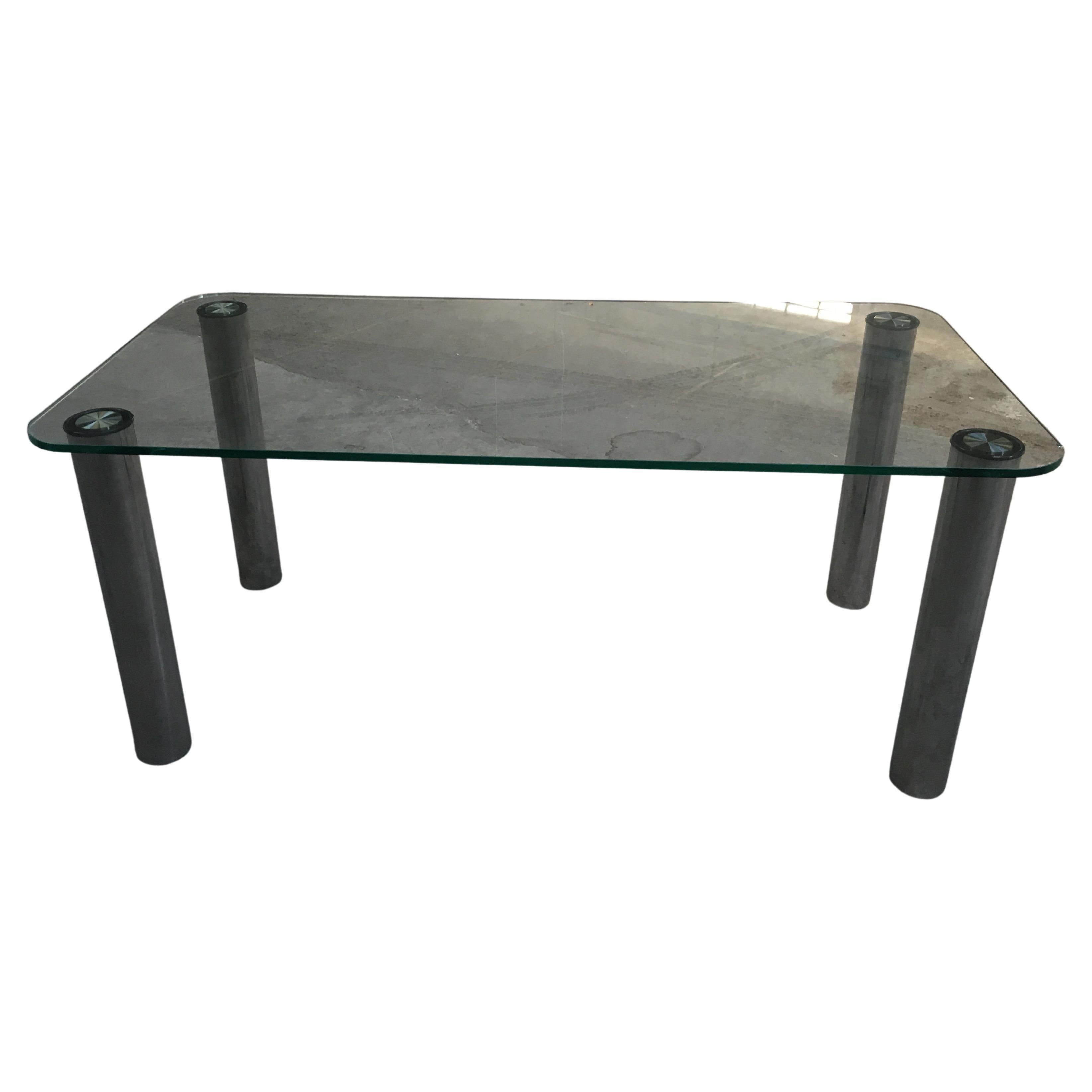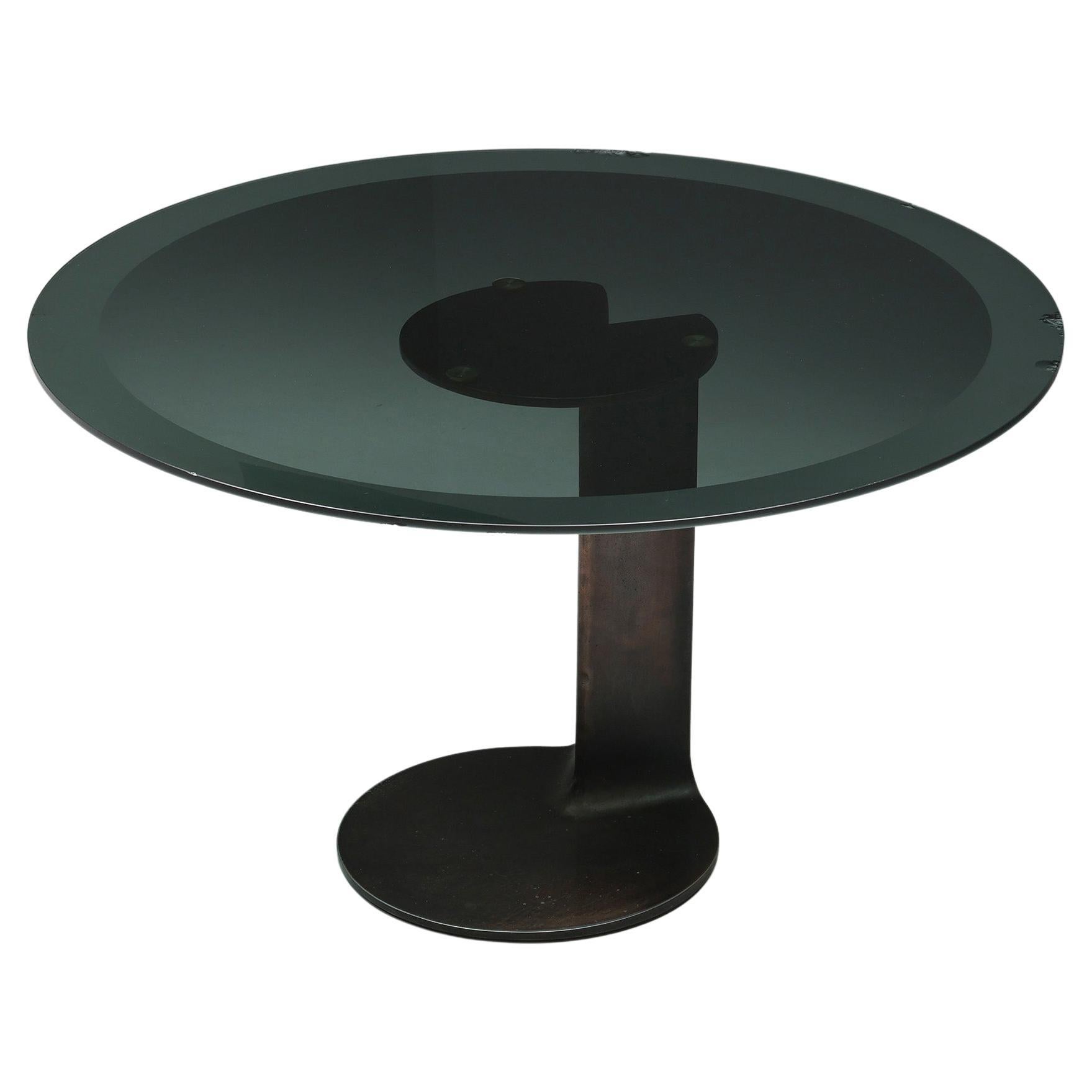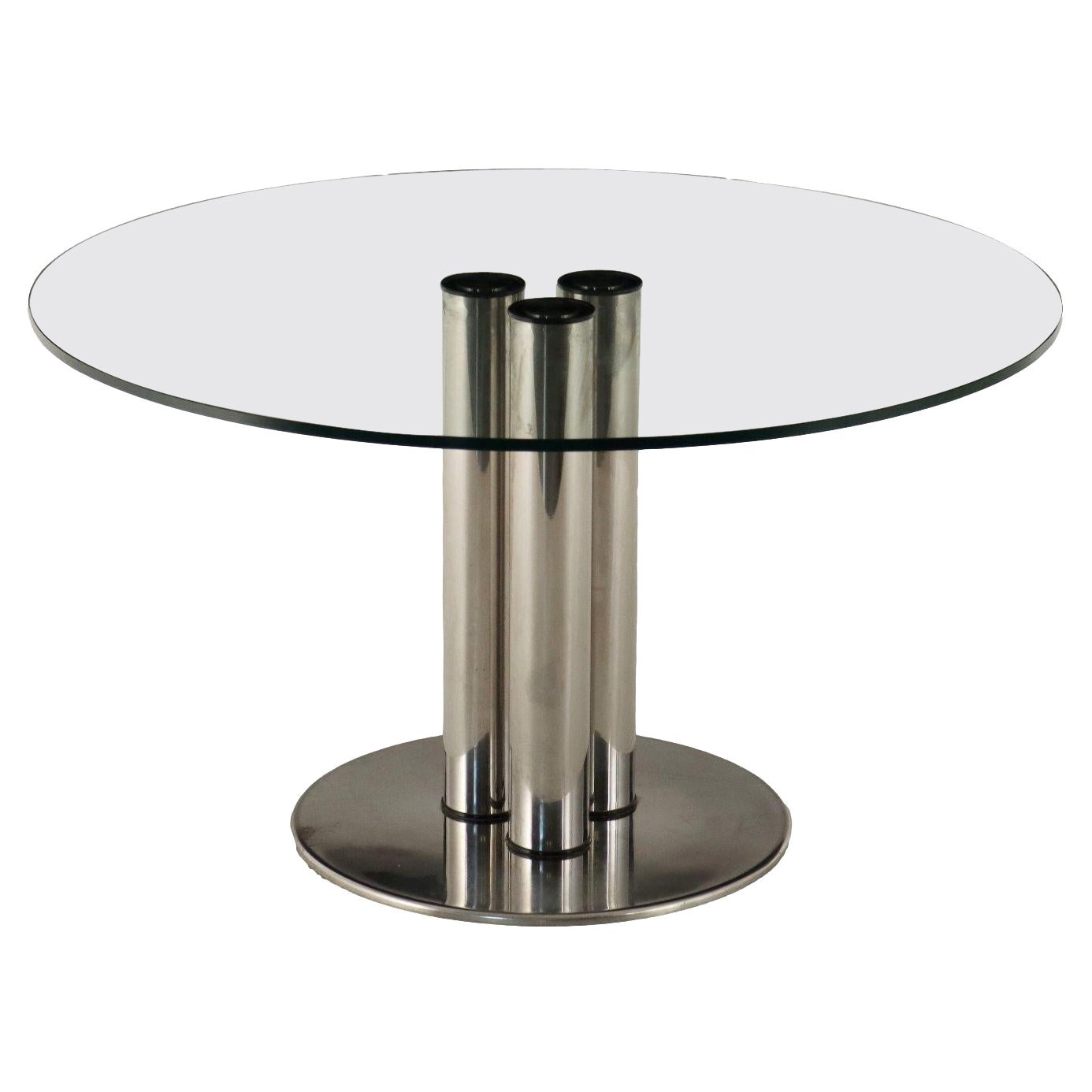Midcentury Italian table mod. TL 58 by Marco Zanuso for Poggi
About the Item
- Creator:Marco Zanuso (Designer),Poggi (Manufacturer)
- Dimensions:Height: 27.96 in (71 cm)Width: 78.75 in (200 cm)Depth: 29.93 in (76 cm)
- Style:Mid-Century Modern (Of the Period)
- Materials and Techniques:Wood
- Place of Origin:Italy
- Period:1970-1979
- Date of Manufacture:1970s
- Condition:Wear consistent with age and use.
- Seller Location:Piacenza, IT
- Reference Number:1stDibs: LU1031639009242
Marco Zanuso
Italian designer Marco Zanuso helped cement his country’s place as a world leader in furniture design that used new materials in revolutionary ways.
Zanuso was part of a generation of furniture designers who encouraged a sharp departure from the traditionalism and classicalism that reigned over the design industry before the war. These designers, who are associated with what we now call mid-century modernism, experimented with new technologies and materials to deliver on the world’s newfound need for streamlined products that represented the future.
After graduating from the Polytechnic University of Milan in 1939 with a degree in architecture, Zanuso served in the Navy during World War II. Soon after the war, he opened his own design firm in Milan in 1945. He later became an editor at well-regarded design magazines Domus and Casabella. He used this editorial platform to both promote new Italian designs as well as his own pieces, some of which he made using unconventional materials like foam and latex. For instance, his famous Lady armchair from 1951 is a composition of foam rubber and Nastro Cord, a recently invented textile band of rubberized fabric that eliminated the need for metal springs. It was one of several pieces he designed for Italian manufacturer Arflex, along with the 1949 Antropus chair and the 1951 Sleep-o-matic sofa.
Zanuso often collaborated with other like-minded creatives. From 1955 until 1957, he was Olivetti’s architect, designing factories across Brazil, and for nearly two decades, he collaborated with German designer Richard Sapper. The pair’s most famous product is the 4999 children’s chair, manufactured in the 1960s by Kartell in Italy. The stackable chair was the first to be manufactured entirely of injection-molded plastic. Zanuso and Sapper also partnered on the 1962 Brionvega Doney 14, the first European-made portable transistor TV; its sleek, compact and curvy form deeply influenced the design of television sets that followed, which were far more sculptural in form than the rigid boxes that characterized early models.
From the 1970s onward, Zanuso taught architecture and industrial design at the Polytechnic University of Milan. He still exercised his creative talents, planning the headquarters for computer companies and renovating Italian theaters.
Each of Zanuso’s elegant works were demonstrative of a forward-looking sensibility. His projects saw an integration of novel industrial materials that not only helped emphasize the beauty of good design but also played a role in rendering these well-made products accessible to everyday consumers.
On 1stDibs, find a collection of vintage Marco Zanuso furniture, including armchairs, sofas, table lamps and other items.
- ShippingRetrieving quote...Ships From: Piacenza, Italy
- Return PolicyA return for this item may be initiated within 3 days of delivery.
- Midcentury pair of "Square" armchairs by Marco Zanuso for Arflex, Italy 1960By Marco Zanuso, ArflexLocated in Piacenza, ItalyPair of "Square" armchairs or lounge chairs designed by Marco Zanuso for Arflex, in 1962. Original leather upholstery. Very good vintage condition.Category
Vintage 1960s Italian Mid-Century Modern Armchairs
MaterialsLeather, Wood
- Pair of "Senior" Armchairs by Marco Zanuso for Arflex, Italy, 1960By Marco Zanuso, ArflexLocated in Piacenza, ItalyIconic lounge chair pair designed by Marco Zanuso and manufactured by Arflex, Italy, 1960. These two lounge chairs have their original leather upholstery. Magnificent set of chairs...Category
Vintage 1960s Italian Mid-Century Modern Armchairs
MaterialsFaux Leather
- Midcentury wood Italian Consolle Table, 1940sLocated in Piacenza, ItalyElegant consolle table, handmade in italy in 1940s This console can be used as a bar table. Elegant brass details.Category
Vintage 1940s Italian Mid-Century Modern Console Tables
MaterialsWood, Burl
- Midcentury bamboo serving table, Italy 1950Located in Piacenza, ItalyMid century folding serving table with bamboo structure decorated with original fabric and brass details. The structure of this table can be combined with a tray used as a top. Made...Category
Vintage 1970s Italian Mid-Century Modern Side Tables
MaterialsBamboo, Wood
- Filicudi Dining Table by Ettore Sottsass for Zanotta, Italy, 1990By Ettore SottsassLocated in Piacenza, ItalyStylish Filicudi dining table with wooden base and silkscreened melamine top designed by Ettore Sottsass for Zanotta Italy in 1992.Category
1990s Italian Mid-Century Modern Dining Room Tables
MaterialsLaminate, Wood
- Midcentury center table mod. Trilogia by Gabetti & Isola, Italy 1970sBy Roberto Gabetti and Aimaro IsolaLocated in Piacenza, ItalyIconic coffee table model "Trilogia" designed by Roberto Gabetti, Aimaro Isola and Guido Drocco. Original chromed metal structure with solid wood details and crystal glass top. Italy...Category
Vintage 1970s Italian Mid-Century Modern Center Tables
MaterialsCrystal, Metal
- Rare Mahogany 'TL2' Cavalletto Table / Desk by Franco Albini for Poggi, ItalyBy Franco Albini, PoggiLocated in London, GBA rare mahogany version of the Cavaletto or TL2 table designed by the great neo-rationalist designer, Franco Albini. Designed in 1950 for manufacturers Poggi...Category
Vintage 1950s Italian Mid-Century Modern Desks and Writing Tables
MaterialsSteel
- Dining Table by Marco Zanuso for Zanotta, Italy, 1970sBy Marco Zanuso, ZanottaLocated in Brussels, BEDining table by Marco Zanuso for Zanotta, Italy, 1970s.Category
Vintage 1970s Italian Mid-Century Modern Tables
MaterialsMarble, Steel
- Franco Albini TL30 Round Table in Metal and Wood for Poggi Pavia 1950s ItalyBy Franco Albini, PoggiLocated in Montecatini Terme, ITRound table model TL30 with black lacquered metal base and a wooden top. Designed by Franco Albini for Poggi, Pavia in 1950s. After spending his childhood and part of his youth in Robbiate in Brianza, where he was born in 1905, Franco Albini moved with his family to Milan. Here he enrolled in the Faculty of Architecture of the Polytechnic and graduated in 1929. He starts his professional activity in the studio of Gio Ponti and Emilio Lancia, with whom he collaborates for three years. He probably had his first international contacts here In those three years, the works carried out are admittedly of a twentieth-century imprint. It was the meeting with Edoardo Persico that marked a clear turning point towards rationalism and the rapprochement with the group of editors of “Casabella”. The new phase that that meeting provoked starts with the opening of the first professional studio in via Panizza with Renato Camus and Giancarlo Palanti. The group of architects began to deal with public housing by participating in the competition for the Baracca neighborhood in San Siro in 1932 and then creating the Ifacp neighborhoods: Fabio Filzi (1936/38), Gabriele D’Annunzio and Ettore Ponti (1939). Also in those years Albini worked on his first villa Pestarini. But it is above all in the context of the exhibitions that the Milanese master experiments his compromise between that “rigor and poetic fantasy” coining the elements that will be a recurring theme in all the declinations of his work – architecture, interiors, design pieces . The opening in 1933 of the new headquarters of the Triennale in Milan, in the Palazzo dell’Arte, becomes an important opportunity to express the strong innovative character of rationalist thought, a gym in which to freely experiment with new materials and new solutions, but above all a “method”. Together with Giancarlo Palanti, Albini on the occasion of the V Triennale di Milano sets up the steel structure house, for which he also designs the ‘furniture. At the subsequent Triennale of 1936, marked by the untimely death of Persico, together with a group of young designers gathered by Pagano in the previous edition of 1933, Franco Albini takes care of the preparation of the exhibition of the house, in which the furniture of three types of accommodation. The staging of Stanza per un uomo, at that same Triennale, allows us to understand the acute and ironic approach that is part of Albini, as a man and as a designer: the theme addressed is that of the existenzminimum and the reference of the project is to the fascist myth of the athletic and sporty man, but it is also a way to reflect on low-cost housing, the reduction of surfaces to a minimum and respect for the way of living. In that same year Albini and Romano designed the Ancient Italian Goldsmith’s Exhibition: vertical uprights, simple linear rods, design the space. A theme, that of the “flagpole”, which seems to be the center of the evolution of his production and creative process. The concept is reworked over time, with the technique of decomposition and recomposition typical of Albinian planning: in the setting up of the Scipio Exhibition and of contemporary drawings (1941) the tapered flagpoles, on which the paintings and display cases are hung, are supported by a grid of steel cables; in the Vanzetti stand (1942) they take on the V shape; in the Olivetti store in Paris (1956) the uprights in polished mahogany support the shelves for displaying typewriters and calculators. The reflection on this theme arises from the desire to interpret the architectural space, to read it through the use of a grid, to introduce the third dimension, the vertical one, while maintaining a sense of lightness and transparency. The flagpole is found, however, also in areas other than the exhibition ones. In the apartments he designed, it is used as a pivot on which the paintings can be suspended and rotated to allow different points of view, but at the same time as an element capable of dividing spaces. The Veliero bookcase...Category
Vintage 1950s Italian Mid-Century Modern Dining Room Tables
MaterialsMetal
- Mid-Century Modern Italian "Marcuso" Table by Marco Zanuso for Zanotta, 1970sBy Marco Zanuso, ZanottaLocated in Prato, ITMid-Century Modern Italian "Marcuso" dining or center chrome and glass table by Marco Zanuso for Zanotta.Category
Vintage 1970s Italian Mid-Century Modern Tables
MaterialsStainless Steel
- TL59 Dining Table in Bronze & Glass by Afra & Tobia Scarpa for Poggi, 1975By Poggi, Afra & Tobia ScarpaLocated in Antwerp, BETL59; dining table; round; bronze; glass; Smoked glass; Afra & Tobia Scarpa; Poggi; 1975; Italy; Italian Design; Post-Modern; This remarkable round dining table is designed by A...Category
Vintage 1970s Italian Post-Modern Dining Room Tables
MaterialsBronze, Metal
- Tavolo tondo in cristallo 'Marcuso 2532' Marco Zanuso per Zanotta anni 70By Marco Zanuso, ZanottaLocated in Milano, ITTavolo da pranzo vintage disegnato da Marco Zanuso e prodotto da Zanotta a partire dalla fine degli anni '60. Base tonda e tre gambe in acciaio, piano tondo i...Category
Vintage 1970s Italian Mid-Century Modern Tables
MaterialsCrystal, Steel
